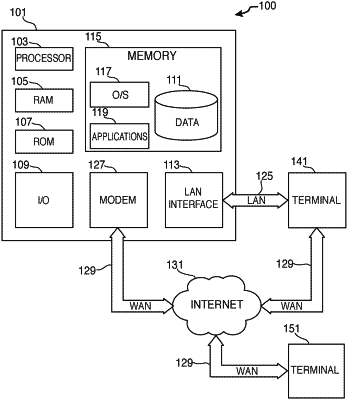| CPC G06Q 40/04 (2013.01) [G06Q 30/0206 (2013.01)] | 7 Claims |

|
1. One or more non-transitory computer-readable media storing computer-executable instructions which, when executed by an intra-day index fund processor on a computer system, perform a method for providing an hourly, intra-day rebalancing of an intra-day index, the method comprising:
re-purposing a real-time quote generator for use in generating quotes suitable for use with the intra-day index fund processor;
sourcing in real-time a value of an underlying index at a first, pre-determined, intra-day, balancing point, said sourcing in real-time comprising retrieving, from a local cache memory, the value from the real-time quote generator at a point in time that is fixed with respect to the balancing point;
determining a probable value of the underlying index at a second, later-in-time, pre-determined, intra-day, balancing point, said probable value corresponding to a predicted value at the second balancing point comprising retrieving, from the local cache memory, the value from the real-time quote generator at a point in time that is fixed with respect to the second balancing point;
if a difference between the value and the probable value is projected to increase between the first balancing point and the second balancing point, then using the intra-day index fund processor to send an instruction for proportionally increasing, by no more than a pre-determined percentage cap, an exposure of the intra-day index to a value of underlying index, via the intra-day index purchasing additional shares of the underlying index;
if the difference between the value and the probable value is projected to decrease between the first balancing point and the second balancing point, then using the intra-day index fund processor to send an instruction for proportionally decreasing, by no more than the pre-determined percentage floor, the exposure of the intra-day index to the value of the underlying index, via the intra-day index selling shares of the underlying index;
dividing a set of holdings of the underlying index into N sub-units, in which each of the sub-unit of holdings is traded over each of N fixed intervals respectively throughout the trading day;
comparing using the intra-day index fund processor, the current trading volatility of the underlying index to a historic trading volatility of the underlying index;
if the current trading volatility is greater than the historic trading volatility, then using the intra-day index fund processor to send an instruction for decreasing the leverage (“deleverage”) of the intra-day index with respect to the underlying index, via the intra-day index selling shares of the underlying index;
if the current trading volatility is less than the historic trading volatility as computed using an equally weighted moving average smoothing method, then using the intra-day index fund processor to send an instruction for increasing the leverage (“lever”) of the intra-day index with respect to the underlying index, via the intra-day index purchasing additional shares of the underlying index;
decreasing the pre-determined percentage cap in response to a finding of a decrease in trading volatility producing a more powerful effect on volatility than was previously recorded; and
increasing the pre-determined percentage cap in response to a finding of a decrease in trading volatility producing a less powerful effect on volatility than was previously recorded,
thereby hourly rebalancing the intra-day index.
|